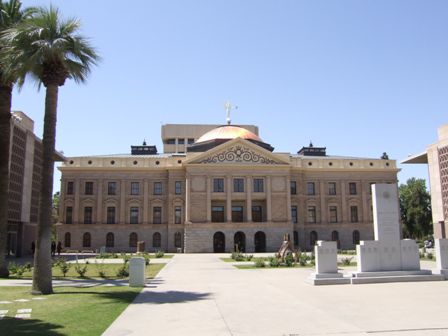 |
Phoenix is the capital of Arizona and so has the State seat of government.
This was the original capitol building built in 1898, although since 1977 it
has been a museum. There
are two chambers, a 30 person Senate which now sits in the building to the left and a
60
person House of Representatives which sits in the building to the right. The Governor and the
Executive
are in the building just behind the dome of the museum. None are as grand as other State
capitols we have visited so far, but then Arizona only became a State in 1912. |
| Inside the museum is a display on the USS Arizona.
This was a super dreadnought built in 1916 and modernised in 1929. It was
sunk at Pearl Harbour in 1941 with the loss of 1117 men - over half the
military losses that day. I was interested to note that the model only has
five anti aircraft machine guns, showing how ill-prepared they were for an
air war. | 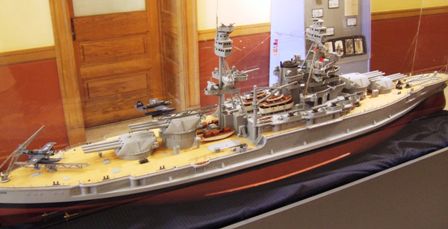 |
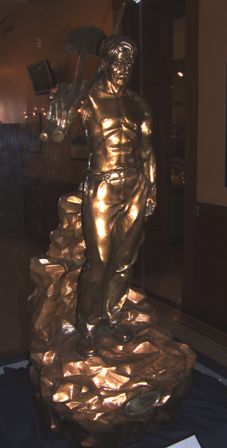 |
The bulk of the display is of the silver service which had been given to the
warship for when it was used for diplomatic visits. It was not on board when
the ship was sunk. The service has 147
pieces and was originally a gift of local businessmen led by the mayor of
Nogales (a town on both sides of the border). This is a bronze centrepiece
statue of an Arizona copper miner. |
| Another centrepiece is the punchbowl. Copper features
in many of the pieces which are engraved with pictures of local interest eg
the saguaro | 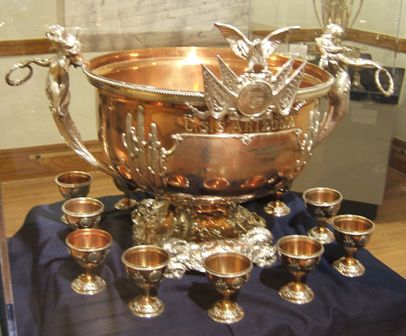 |
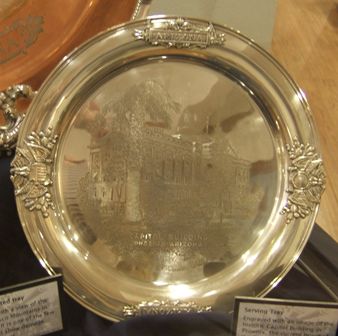 |
The serving tray is a more traditional piece engraved with a picture of the
Capitol building. |
| After the war the Americans sent a trainload of donations
to the French people. What is less known is that the French sent one back to
the US.
It had 49 cars, one for each state, with Washington DC and Hawaii sharing
one, and was called the "Gratitude Train". | 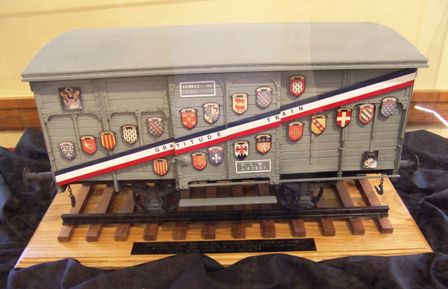 |
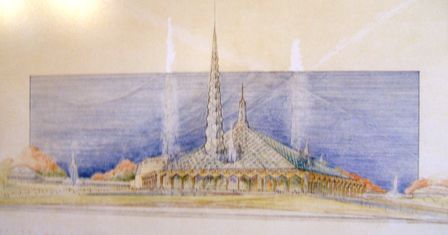 |
When the state wanted a new Capitol building several designs were put
forward.
One was so ugly that Frank Lloyd Wright was moved to sketch an alternative.
His wasn't selected either but it did kill off the first. |
| The original building is topped by a copper dome on
which sits a statue of Winged Victory. This is a model in the museum. | 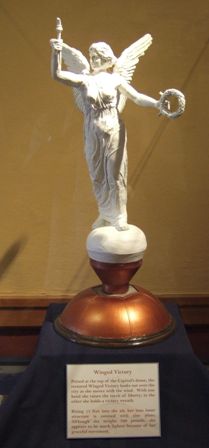 |
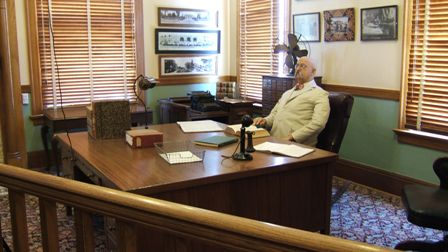 |
Inside the museum some of the original offices are on display as they were
once used. This is the Governor's
office with Governor Hunt in office. He served many terms and at one point
was defeated. He refused to leave office and argued through the courts that
the election was flawed. Eventually he was reinstated.
Nothing changes. |
| This chamber was for the House of Representatives. It
looks more like a schoolroom. Each of the desks has the name, occupation and place of
birth of the last representatives to sit here. Only two were born in Arizona. The rest
came from all over including several who were born in Europe. | 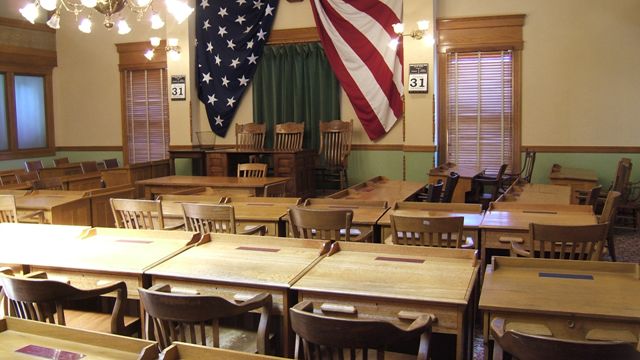 |
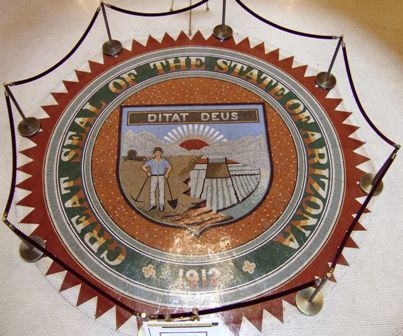 |
Set in the floor at the centre of the entrance under the dome is the state
seal. It is about 15ft in diameter. |
| The jaguar is now extinct in Arizona although there is
talk of trying to reintroduce it. | 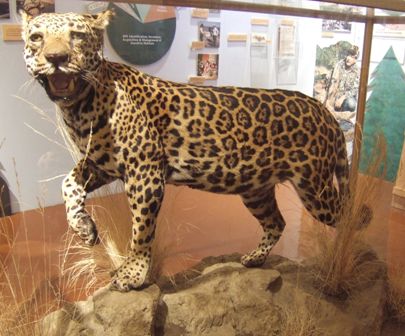 |
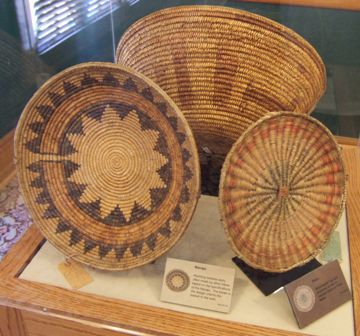 |
The native American women are very skilled at basket weaving. These have
often quite intricate patterns particular to their tribe. The bigger basket
is a wedding basket to a Navajo design. The break in the pattern orients the
basket to the east. The smaller tray is a Hopi design similar to those
made on Third Mesa.
All these baskets are over 100 years old. |
| The small baskets were made of willow and martynia ca
1900-10 by Akimel O'Otham weavers. The large basket is ca 1880-1907 by the
same group (also known as the "Pima". Martynia is often used for the base
and the rim because of its strength. | 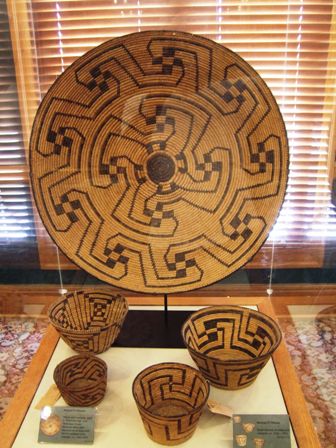 |
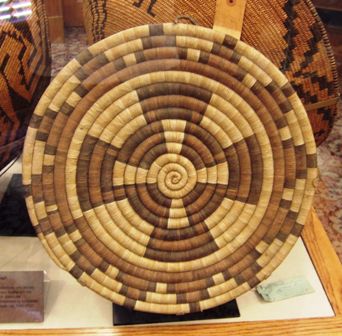 |
This is a Hopi curled tray woven with turkey feathers in four directions
surrounded by cumulous clouds, ca 1890-1900. It is probably from Second
Mesa. The baskets were all collected by Edward Curtis who wrote several
books on the baskets of the south western natives. |
| The water jug is lined with pine pitch and was made by
the western Apache. | 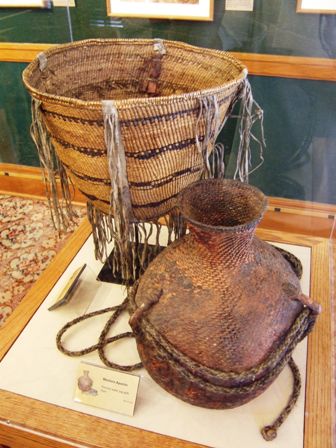 |
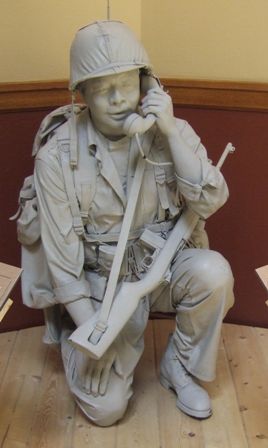 |
The fourth floor of the museum contains several statues including this
Navajo code talker from the Second World War. They were famous because their
code using the Navajo language was unbreakable. It was much faster to decode
than any other code in use. |
| Another western icon was the cattle rancher. The trail
hands were typically 12-18 years old and earned $25 per month looking after
the 1.5 million cattle roaming over about 120000 sq miles. | 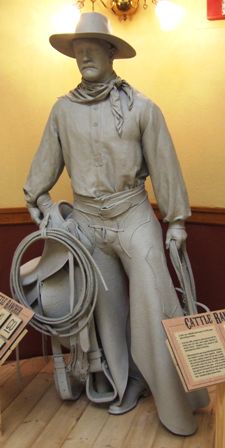 |
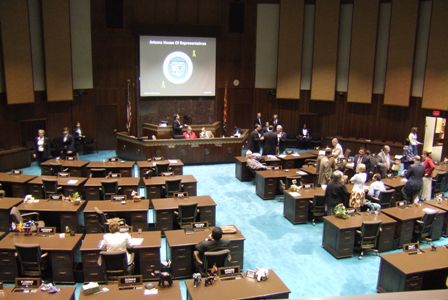 |
The timing was such that we had an opportunity to sit in on a session in
both houses. They both had prayers and pledged allegiance to the flag. Then
they had 'points of personal privilege' when they introduced guests in the
gallery or made personal statements. There were announcements about
cancelled meetings. Then they adjourned. Less than 15 minutes each. Not bad
work if you can get it. The Senate prayers were led by a Navajo senator who
spoke in his native language and English. He was very difficult to follow.
If you look very carefully you may see toy elephants (Republicans) and
donkeys (Democrats) on most of the desks. Says it all really. |
Arizona has a land area of about 115000 sq miles and a population of around 6.5 million. By contrast England has a land area of about 50000 sq miles and a population of
about 55 million. The UK is a little larger at 78000 sq miles and about 65 million people.
The county of Yorkshire has a land area of about 6000 sq miles and a population
of about 6.5 million. ie about the same as Arizona but 20 times more densely
populated . Only 14 US states are more populated but most are physically larger. |